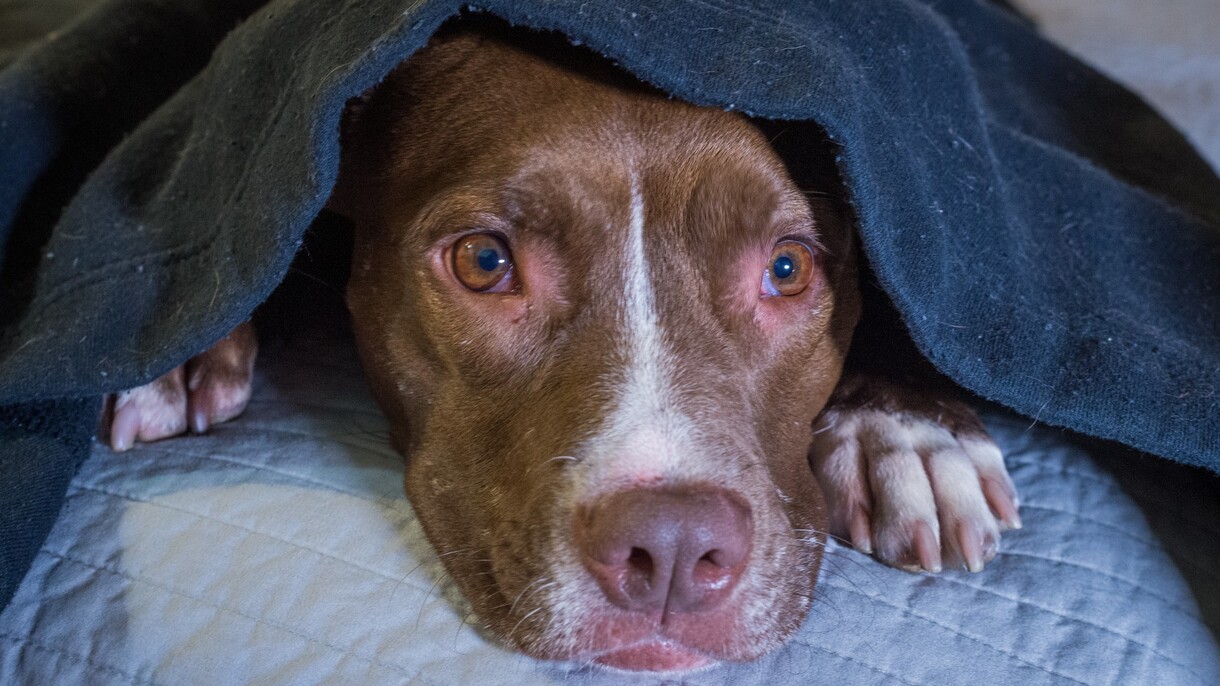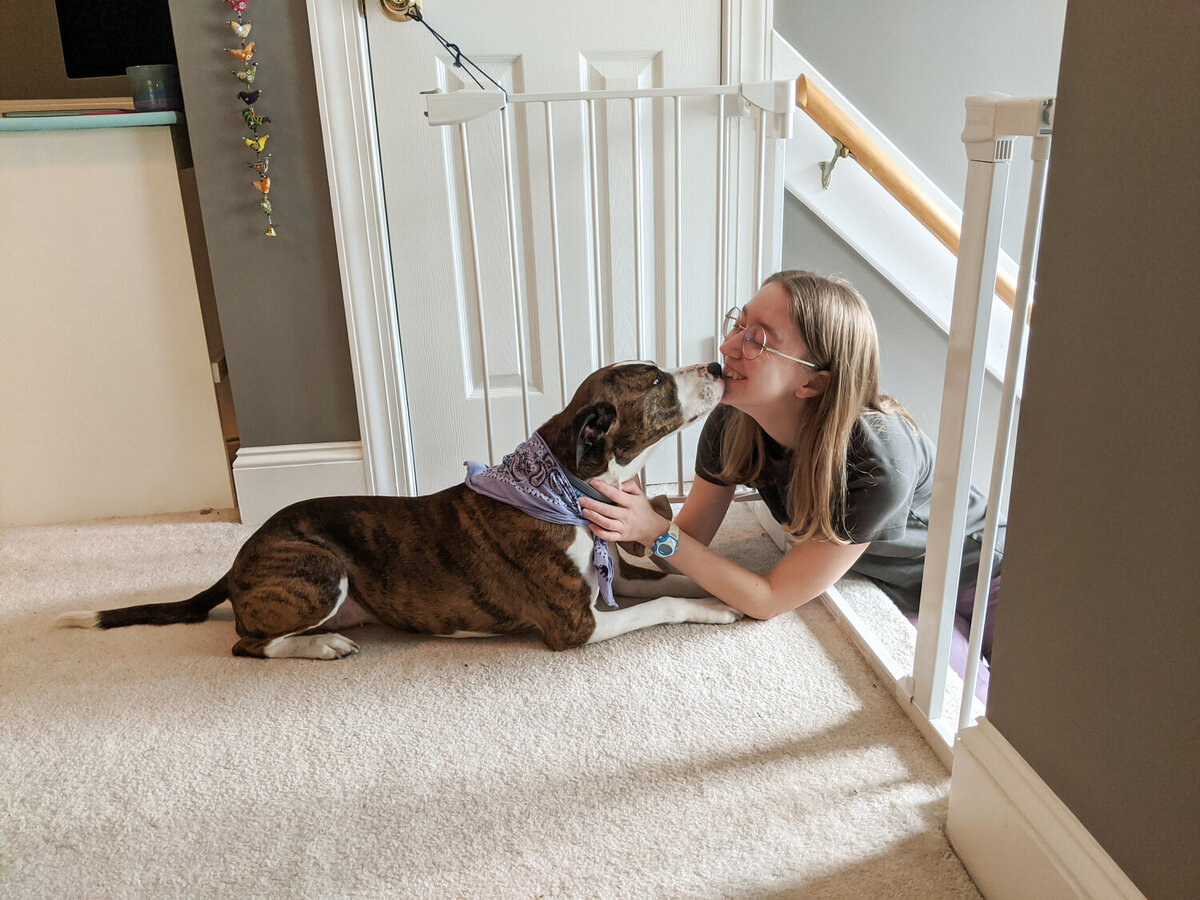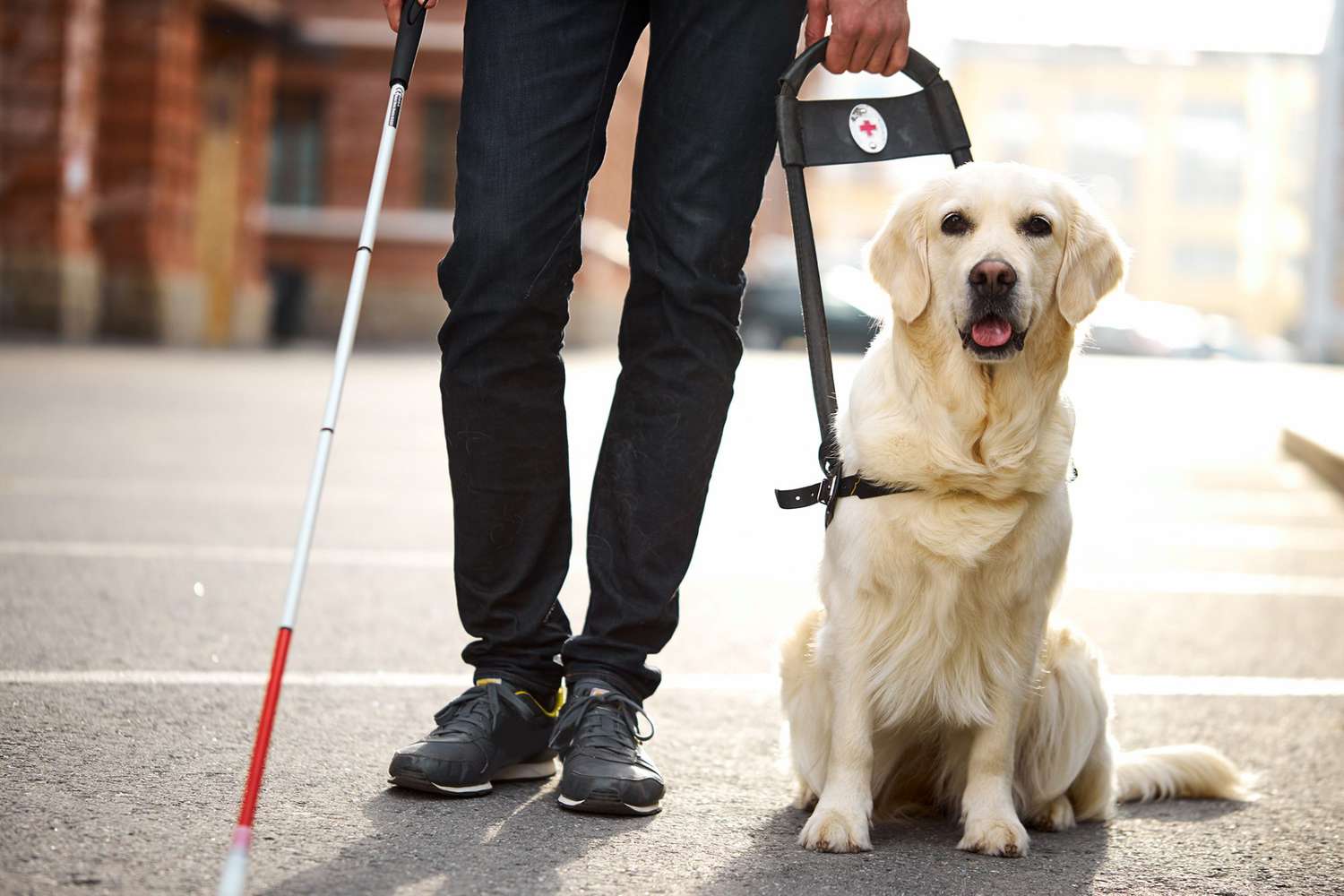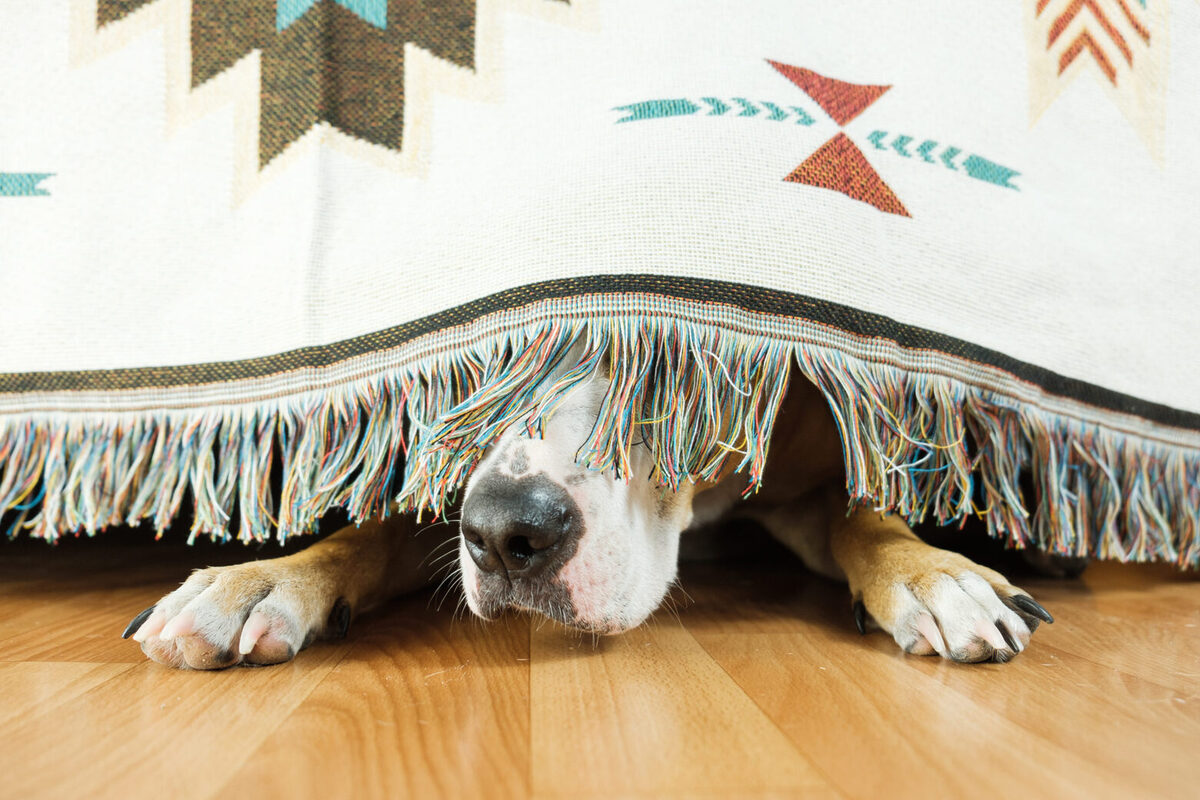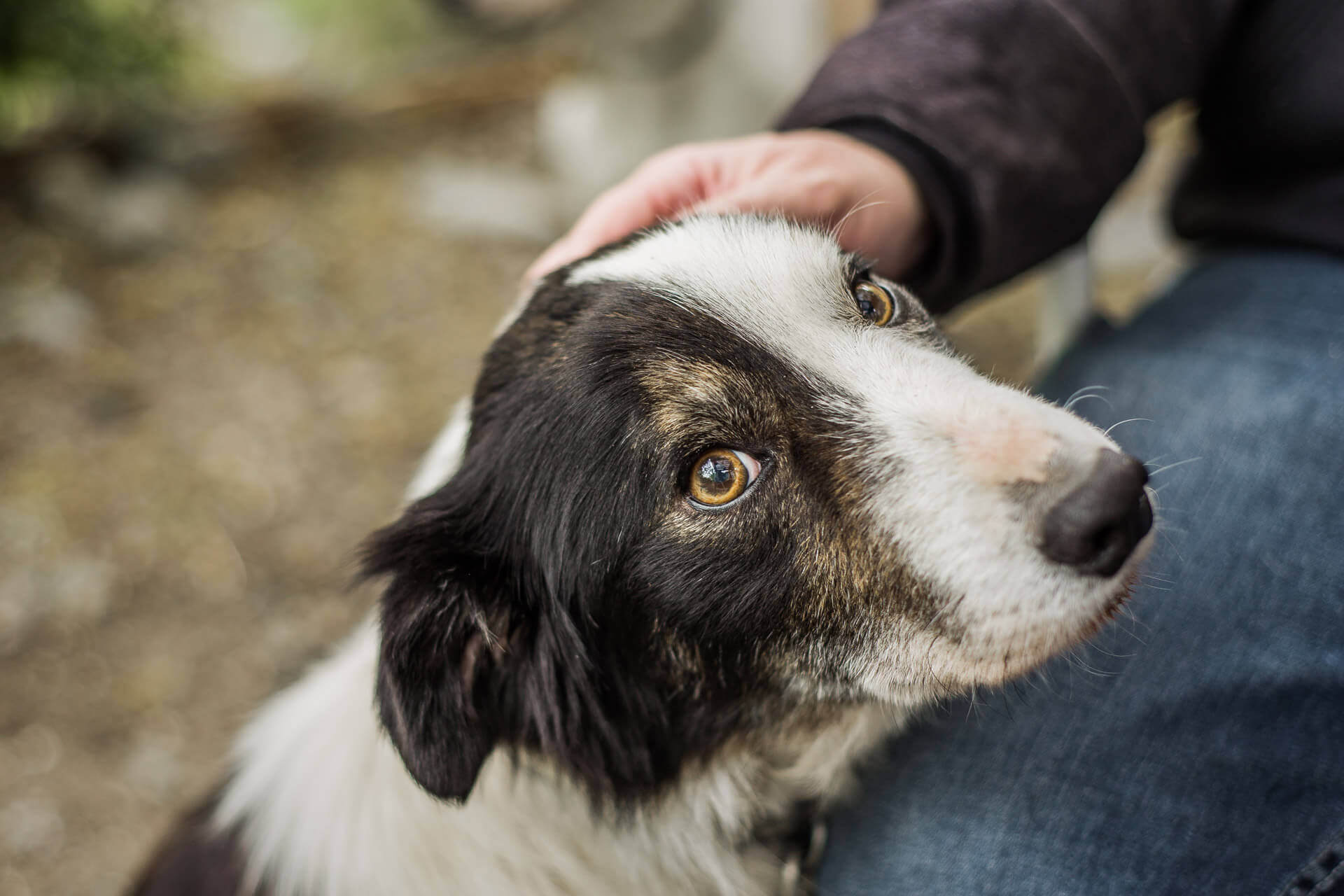Home>Health & Wellness>Behavior & Cognitive Care>How Can You Help A Dog With Separation Anxiety?


Behavior & Cognitive Care
How Can You Help A Dog With Separation Anxiety?
Published: January 29, 2024
Learn effective strategies for helping a dog with separation anxiety through behavior and cognitive care. Discover tips to ease your pet's distress and improve their well-being.
(Many of the links in this article redirect to a specific reviewed product. Your purchase of these products through affiliate links helps to generate commission for Pawsomeoldies.com, at no extra cost. Learn more)
Table of Contents
Understanding Separation Anxiety in Dogs
Separation anxiety is a common behavioral issue in dogs, characterized by distress and anxiety when they are separated from their owners or left alone. This condition can be emotionally challenging for both the dog and the owner, impacting the overall well-being of the pet. Understanding the underlying causes and manifestations of separation anxiety is crucial in providing effective support and care for affected dogs.
Dogs are social animals that form strong emotional bonds with their human companions. When left alone, they may experience intense feelings of fear, insecurity, and loneliness, leading to various behavioral problems. It's important to recognize that separation anxiety is not a result of disobedience or spite; rather, it stems from the dog's deep emotional attachment and reliance on their owners for security and comfort.
Common triggers for separation anxiety in dogs include abrupt changes in routine, such as a shift in the owner's schedule or a recent move to a new environment. Additionally, traumatic experiences, such as being abandoned or rehomed, can contribute to the development of separation anxiety. Understanding these triggers can help owners empathize with their pets and address the root causes of their distress.
Recognizing the signs of separation anxiety is essential for early intervention. Dogs with separation anxiety may exhibit destructive behavior, such as chewing furniture or household items, excessive barking or howling, and attempts to escape confinement. They may also display symptoms of distress, such as pacing, drooling, and urinating or defecating indoors, despite being house-trained.
By understanding the emotional and behavioral aspects of separation anxiety in dogs, owners can approach the issue with empathy and patience, laying the groundwork for effective strategies to alleviate their pet's distress. This understanding forms the basis for implementing supportive measures and behavior modification techniques that can help dogs overcome their anxiety and lead happier, more balanced lives.
Signs and Symptoms of Separation Anxiety
Separation anxiety in dogs manifests through a range of distressing behaviors and physical symptoms, reflecting the emotional turmoil experienced when they are left alone. Recognizing these signs is crucial for identifying and addressing the condition effectively.
Behavioral Indicators
Dogs with separation anxiety often engage in destructive behaviors as a coping mechanism for their distress. This may include chewing household items, furniture, or door frames, which can result in significant damage to the home. Additionally, they may exhibit excessive barking, howling, or whining, often persisting throughout the duration of their owner's absence. These vocalizations are a clear expression of their anxiety and longing for companionship.
Physical Symptoms
The emotional stress of separation anxiety can manifest physically in dogs. They may engage in repetitive, frantic behaviors such as pacing or circling, indicative of their inner turmoil. Excessive drooling, panting, and trembling are common physical manifestations of their distress. Furthermore, some dogs may exhibit signs of gastrointestinal upset, leading to indoor accidents despite being housetrained. These physical symptoms underscore the profound emotional impact of separation anxiety on dogs.
Escape Attempts
In a desperate attempt to reunite with their owners, dogs with separation anxiety may resort to escape tactics. This can involve scratching or digging at doors and windows, potentially causing self-injury in the process. Such behavior reflects their overwhelming desire to alleviate their distress by seeking proximity to their human companions.
Agitation Before Departure
Observing a dog's behavior prior to their owner's departure can also reveal signs of separation anxiety. Dogs may become visibly agitated, displaying clingy behavior, pacing, or attempting to block their owner from leaving. This pre-departure anxiety is a poignant indication of the emotional distress they anticipate upon being left alone.
Distress Upon Reunion
Paradoxically, dogs with separation anxiety may exhibit extreme excitement or clinginess upon their owner's return. While this may initially appear endearing, it reflects the intensity of their distress during the period of separation. Their inability to self-soothe and regulate their emotions in the absence of their owner is evident in their exaggerated response to reunification.
Recognizing these signs and symptoms is pivotal in addressing separation anxiety in dogs. By understanding the depth of their distress and the various ways it manifests, owners can implement targeted strategies to alleviate their pet's anxiety and improve their overall well-being.
Tips for Helping a Dog with Separation Anxiety
Understanding the challenges associated with a dog experiencing separation anxiety is the first step towards providing effective support and care. Here are some practical tips to help alleviate your dog's distress and promote a sense of security and well-being:
-
Gradual Desensitization: Introduce gradual departures to accustom your dog to being alone. Start with short periods of separation and gradually increase the duration over time. This approach helps mitigate the anxiety associated with abrupt and prolonged absences.
-
Create a Safe Space: Designate a specific area in the home where your dog feels secure and comfortable. This can be achieved by providing their favorite toys, blankets, and bedding, along with access to natural light and soothing background sounds. Creating a positive environment can help alleviate their anxiety during periods of solitude.
-
Establish a Consistent Routine: Dogs thrive on routine and predictability. Establishing a consistent daily schedule for feeding, exercise, and playtime can provide a sense of stability and security, reducing the anxiety associated with uncertainty.
-
Interactive Toys and Puzzles: Engage your dog with interactive toys and puzzles that provide mental stimulation and diversion in your absence. Treat-dispensing toys or puzzle feeders can captivate their attention and alleviate boredom, redirecting their focus from anxiety-inducing behaviors.
-
Positive Reinforcement: Encourage positive associations with alone time by rewarding calm and relaxed behavior. Offer treats or verbal praise when your dog displays composure during brief departures, reinforcing a positive emotional response to being alone.
-
Physical Exercise: Prior to periods of separation, engage your dog in physical exercise to expend excess energy and promote relaxation. A tired dog is more likely to rest and remain calm during your absence, reducing the likelihood of anxious behaviors.
-
Seek Professional Guidance: Consult a professional dog trainer or behaviorist with experience in addressing separation anxiety. They can provide personalized strategies and guidance tailored to your dog's specific needs, facilitating a comprehensive approach to managing their anxiety.
-
Avoid Excessive Farewells: Limit emotional farewells and arrivals to prevent reinforcing your dog's anxiety. Maintain a calm and composed demeanor when leaving and returning, minimizing the emotional intensity surrounding departures and reunions.
-
Utilize Calming Aids: Consider using calming aids such as pheromone diffusers, calming music, or anxiety-reducing apparel, which can help create a soothing environment and promote relaxation in your dog's absence.
By implementing these tips with patience and consistency, you can help your dog navigate through their separation anxiety, fostering a sense of security and emotional well-being. Each dog is unique, so it's important to tailor these strategies to suit your pet's individual temperament and needs. With dedication and understanding, you can make significant strides in supporting your dog through their journey to emotional stability and contentment.
Creating a Safe and Comfortable Environment
Creating a safe and comfortable environment is paramount in addressing the distress experienced by dogs with separation anxiety. By establishing a nurturing space that promotes feelings of security and relaxation, owners can significantly alleviate their pet's anxiety during periods of solitude.
One fundamental aspect of creating a safe environment for a dog with separation anxiety is to designate a specific area within the home that serves as their sanctuary. This area should be equipped with familiar and comforting items, such as their favorite toys, blankets, and bedding. These familiar objects can provide a sense of reassurance and stability, serving as tangible reminders of their owner's presence even in their absence. Additionally, ensuring access to natural light and soothing background sounds, such as soft music or ambient noise, can contribute to a calming atmosphere, reducing the sense of isolation and unease.
Incorporating elements of enrichment and mental stimulation within the designated space can further enhance the comfort and well-being of the dog. Interactive toys and puzzle feeders can engage their cognitive faculties, offering a constructive outlet for their energy and attention. These activities not only serve as enjoyable distractions but also promote a sense of accomplishment and contentment, mitigating the distress associated with being alone.
Furthermore, maintaining a consistent and predictable routine within the safe environment is essential for fostering a sense of security. Dogs thrive on structure and familiarity, and a consistent daily schedule for feeding, exercise, and relaxation can provide a reassuring sense of predictability. This predictability helps mitigate the anxiety stemming from uncertainty, as the dog learns to anticipate and adapt to the rhythm of their daily activities.
Owners should also consider the physical comfort of their pet within the designated space. Ensuring that the area is well-ventilated and maintains a comfortable temperature is crucial for their overall well-being. Additionally, providing access to fresh water and ensuring that the space is free from potential hazards or obstructions contributes to a safe and nurturing environment.
By creating a safe and comfortable environment tailored to the specific needs and preferences of the dog, owners can significantly mitigate the distress associated with separation anxiety. This proactive approach not only addresses the immediate symptoms of anxiety but also fosters a sense of emotional security and well-being, laying the foundation for the dog to navigate through periods of solitude with greater ease and composure.
Read more: What Can You Feed A Dog To Help With Fleas
Training and Behavior Modification Techniques
Training and behavior modification techniques play a pivotal role in addressing separation anxiety in dogs, offering proactive strategies to alleviate distress and promote emotional well-being. By implementing targeted training methods and behavior modification approaches, owners can empower their dogs to develop coping mechanisms and emotional resilience, ultimately fostering a sense of security and composure during periods of solitude.
One fundamental aspect of training involves desensitization to departures. This process entails gradually accustoming the dog to being alone by initiating short absences and progressively extending the duration over time. By exposing the dog to brief periods of solitude in a controlled and gradual manner, they can learn to adapt to the experience without succumbing to overwhelming anxiety. This gradual desensitization approach helps mitigate the distress associated with abrupt and prolonged separations, allowing the dog to build confidence and emotional resilience.
Counterconditioning is another valuable technique that aims to reframe the dog's emotional response to being alone. This involves associating the experience of solitude with positive outcomes, such as receiving treats, engaging in enjoyable activities, or accessing comforting resources within their designated safe space. Through consistent and deliberate counterconditioning, dogs can learn to perceive periods of separation as opportunities for positive experiences, gradually diminishing their anxiety and fostering a more balanced emotional state.
Implementing structured departures and arrivals is essential in shaping the dog's perception of separation. By maintaining a calm and composed demeanor during departures and minimizing emotional intensity during reunions, owners can prevent reinforcing the dog's anxiety. This structured approach helps normalize the process of coming and going, reducing the emotional upheaval associated with transitions and promoting a sense of predictability for the dog.
Engaging the dog in mental and physical enrichment activities can significantly contribute to their emotional well-being and resilience. Interactive toys, puzzle feeders, and engaging activities can divert their attention and provide a constructive outlet for their energy, reducing the focus on distress-inducing behaviors. Additionally, regular physical exercise not only promotes relaxation but also expends excess energy, contributing to a calmer and more composed demeanor during periods of separation.
Seeking professional guidance from a certified dog trainer or behaviorist with expertise in addressing separation anxiety can provide invaluable support. These professionals can offer personalized strategies and tailored behavior modification plans, taking into account the individual temperament and needs of the dog. Their expertise and guidance can empower owners with effective tools and techniques to address the underlying causes of separation anxiety and implement targeted interventions for long-term success.
By integrating these training and behavior modification techniques with patience, consistency, and empathy, owners can play a proactive role in supporting their dogs through the journey to emotional stability and contentment. These techniques not only address the immediate symptoms of separation anxiety but also empower dogs to develop resilience and coping mechanisms, ultimately fostering a sense of security and well-being in their absence.
Seeking Professional Help for Severe Cases
In instances where a dog exhibits severe and persistent symptoms of separation anxiety, seeking professional help becomes imperative to address the underlying complexities of the condition. Professional intervention offers specialized expertise and tailored strategies to support both the dog and the owner in navigating through the challenges associated with severe separation anxiety.
Certified dog behaviorists and veterinary behaviorists are equipped with the knowledge and experience to conduct comprehensive assessments of the dog's behavior and emotional well-being. Through detailed evaluations, they can identify the specific triggers and contributing factors that exacerbate the dog's anxiety, paving the way for targeted interventions. These professionals possess a deep understanding of canine behavior and psychology, enabling them to formulate personalized treatment plans that address the unique needs and sensitivities of the affected dog.
Behavior modification plans developed by professionals are tailored to the individual dog, encompassing a multifaceted approach to alleviate separation anxiety. These plans may incorporate desensitization and counterconditioning techniques, structured training protocols, and environmental modifications aimed at creating a supportive and nurturing context for the dog. Additionally, professionals may collaborate with owners to implement strategies that promote emotional resilience and coping skills in the dog, fostering a gradual but sustainable reduction in anxiety-related behaviors.
In some cases, pharmacological intervention may be recommended as part of a comprehensive treatment approach for severe separation anxiety. Veterinary behaviorists are qualified to assess the potential benefits of medication in managing the dog's anxiety, taking into account factors such as the dog's overall health, behavioral history, and response to previous interventions. When prescribed judiciously and monitored closely, medication can complement behavior modification efforts, providing the dog with a greater sense of emotional stability and well-being.
Furthermore, professional guidance extends to supporting and educating the dog's owner, equipping them with the knowledge and skills to implement the recommended strategies effectively. By fostering a collaborative partnership between the professional and the owner, a supportive framework is established to address the multifaceted dimensions of severe separation anxiety in dogs.
Seeking professional help for severe cases of separation anxiety represents a proactive and compassionate approach to supporting the emotional well-being of affected dogs. By leveraging the expertise of certified behavior professionals, owners can access specialized resources and guidance to navigate through the complexities of the condition, ultimately fostering a positive trajectory towards emotional stability and contentment for their beloved canine companions.



